United States Land Port of Entry in Calais by Robert Siegel Architects
Drivers crossing the border from Canada into the USA at Calais, Maine, would never know that there's a tranquil rock garden sandwiched between the checkpoint buildings designed by New York firm Robert Siegel Architects.
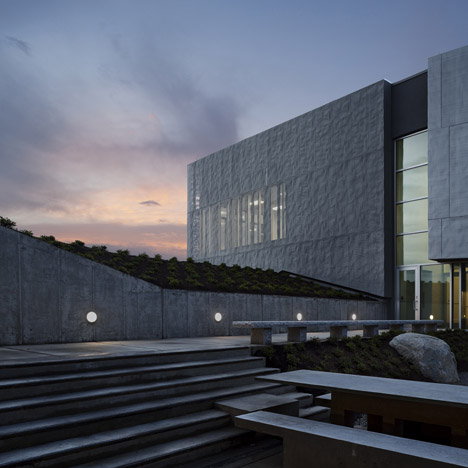
Inspection points are located beneath canopies on both sides of the administration buildings, which are uniformly clad in aluminium panels.
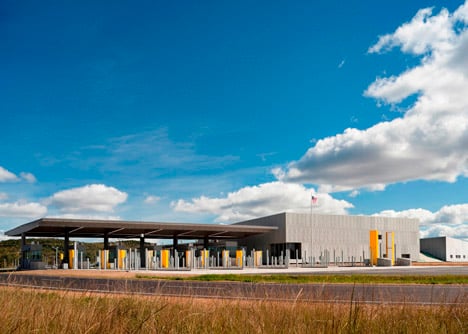
Some of the panels are perforated, revealing the locations of windows beneath.
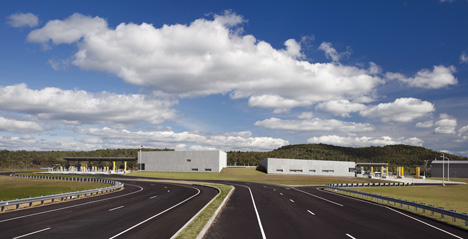
The rock garden is at the centre of the site and provides a courtyard that can be used by staff.
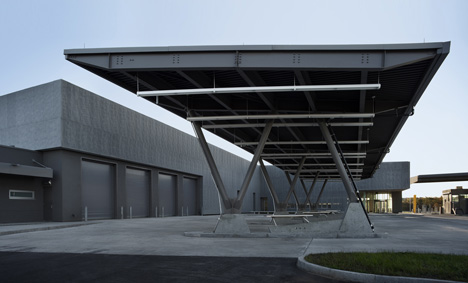
The project is one in a series of security checkpoints that the firm is working on in the USA.
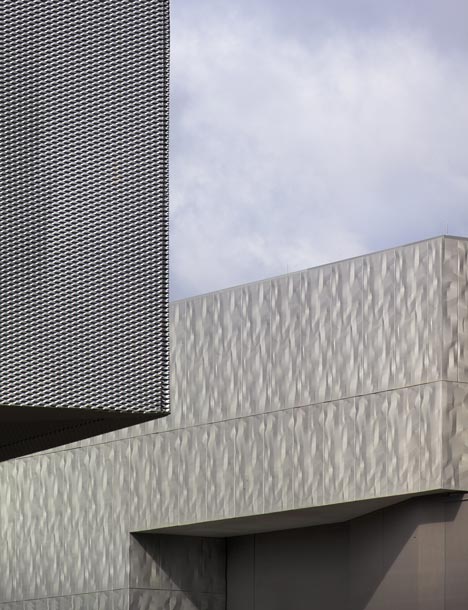
Other border checkpoints we've featured include one between Georgia and Armenia, and one between Georgia and Turkey.
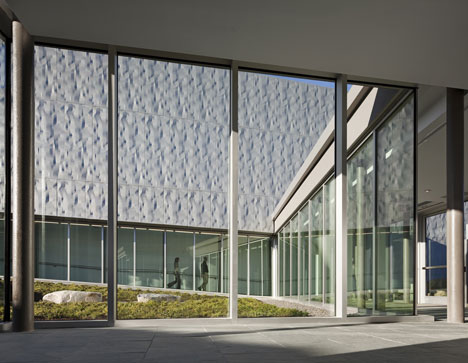
Photography is by Paul Warchol.
Here's a short description from Robert Siegel Architects:
As part of the federal Design Excellence program, the United States General Services Administration awarded Robert Siegel Architects the commission to design a new U.S. Commercial Port of Entry & Border Station in Calais, Maine. The design creates a visual “open door” while providing a highly secure facility capable of handling 3,300,000 cars and trucks per year. The new facility is designed to create a visible testament to the dignity and strength of our Federal Government and to embody the spirit of the United States as welcoming and secure, now and in the future.
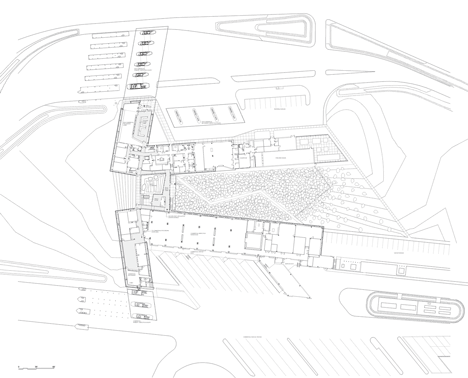
Ground floor plan - click above for larger image
The design concept is the result of our process-driven approach to the project. The site is organized to maximize the efficiency and the security of the work performed there. Vehicular circulation is a fundamental determinant to the overall site planning concept. Equally important is the siting and configuration of the border station building elements, communicating welcome and security while maximizing efficiency.

West elevation - click above for larger image
The building is sited at the high point of a relatively flat site, assuring line of sight visibility from the Station to the entry and exit points of the property. This creates clear, safe and efficient control of incoming and outgoing traffic. The site is configured around these operational needs to meet exceptional environmental standards including the protection of the local aquifer and the collection and purification of site water run off.

Section a - click above for larger image
Internal circulation is a seamless system of physical connections within the building, extending and completing site circulation at many points. Spatial layout, interior design, the inclusion of balanced natural light and the selection of materials and finishes have all been developed together to achieve a comprehensive and unified interior design, compatible with the exterior, for the new United States Border Station.

Section b - click above for larger image
Architects: Robert Siegel Architects
Project Team: Robert Siegel, Eduardo Ramos, Richard Tobias, Brad Burns , Julien Leyssene, Wayne Walker, Holly Williams, Heather Pfister, Eva Hermoso, Justin Huang, Fatmir Hodzic, Scott Schwarzwalder, Tomonori Tsujita, Kelsey Yates, Rita Afonso
Location: Calais, ME
Project Year: November 2009
Area: 100,000 sqf